Elias Altman at Lithub:
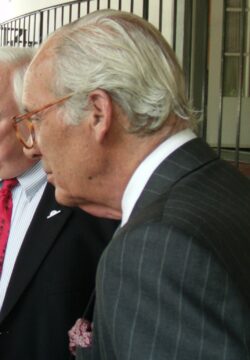 You only meet a few people in your life who, like stars, exert a pull so strong that they alter its trajectory completely. I was lucky enough to enter the orbit of the legendary editor and essayist Lewis Lapham. A week ago, I attended his memorial service. He died on July 23 in Rome at the age of eighty-nine.
You only meet a few people in your life who, like stars, exert a pull so strong that they alter its trajectory completely. I was lucky enough to enter the orbit of the legendary editor and essayist Lewis Lapham. A week ago, I attended his memorial service. He died on July 23 in Rome at the age of eighty-nine.
Lewis came into view in 2002, my junior year of high school—a chance meeting in the library. Having completed a U.S. history exam for which I’d pulled an all-nighter, I flopped out on a soft chair next to the periodical rack to doze it off. For plausible deniability, I reached for a magazine to lay across my lap. I hadn’t read Harper’s before, but that white cover stood out. On it, a painting of three horses paired with an essay by someone who sounded like a passionate preacher from the Second Great Awakening—a term that had been on the test—John Jeremiah Sullivan. The opening piece was titled “The Road to Babylon.” It was by Lewis H. Lapham, another name you don’t forget.
more here.
Enjoying the content on 3QD? Help keep us going by donating now.

 Claire Devon, the protagonist of Missy Mazzoli’s seductively nightmarish opera “The Listeners,” is living contentedly as a suburban schoolteacher somewhere in the Southwest when she is beset by an inexplicable, inescapable sound. It is described as a “dull hum,” an “aggressive drone,” which renders daily existence intolerable. As she searches for the source of the noise, her life unravels by degrees. She develops an ill-defined, ill-fated attachment to one of her students, who also hears the hum. Her husband and her daughter move out; the school fires her. She falls in with a psychiatrist, Howard Bard, who presides over a cultish association of Listeners—people attuned to the hum. When one of them, a conspiracy theorist, fires a gun at a cell tower, the police spring into action and violence ensues. The ending is as unexpected as it is unsettling. Instead of fleeing the cult, Claire takes control of it, the hum having awakened charismatic powers within her. “We all need a family that understands us,” she intones, as Listeners crowd around her.
Claire Devon, the protagonist of Missy Mazzoli’s seductively nightmarish opera “The Listeners,” is living contentedly as a suburban schoolteacher somewhere in the Southwest when she is beset by an inexplicable, inescapable sound. It is described as a “dull hum,” an “aggressive drone,” which renders daily existence intolerable. As she searches for the source of the noise, her life unravels by degrees. She develops an ill-defined, ill-fated attachment to one of her students, who also hears the hum. Her husband and her daughter move out; the school fires her. She falls in with a psychiatrist, Howard Bard, who presides over a cultish association of Listeners—people attuned to the hum. When one of them, a conspiracy theorist, fires a gun at a cell tower, the police spring into action and violence ensues. The ending is as unexpected as it is unsettling. Instead of fleeing the cult, Claire takes control of it, the hum having awakened charismatic powers within her. “We all need a family that understands us,” she intones, as Listeners crowd around her.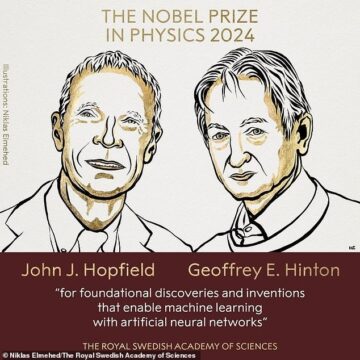 The 2024 Nobel Prize in physics has been awarded to John Hopfield and Geoffrey Hinton for their “foundational discoveries” that enable machine learning with artificial neural networks.
The 2024 Nobel Prize in physics has been awarded to John Hopfield and Geoffrey Hinton for their “foundational discoveries” that enable machine learning with artificial neural networks. Abrupt policy-inspired breakups are just one socio-ethical dilemma ushered in by the era of artificial intimacy. What are the psychological effects of spending time with AI-powered companions that provide everything from fictionalized character building to sexually explicit role play to recreating old-school girlfriends and boyfriends who promise to never ghost or dump you?
Abrupt policy-inspired breakups are just one socio-ethical dilemma ushered in by the era of artificial intimacy. What are the psychological effects of spending time with AI-powered companions that provide everything from fictionalized character building to sexually explicit role play to recreating old-school girlfriends and boyfriends who promise to never ghost or dump you?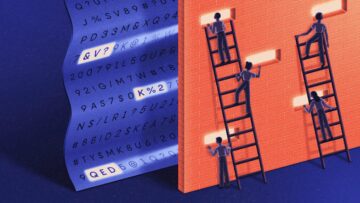 How do you prove something is true? For mathematicians, the answer is simple: Start with some basic assumptions and proceed, step by step, to the conclusion. QED, proof complete. If there’s a mistake anywhere, an expert who reads the proof carefully should be able to spot it. Otherwise, the proof must be valid. Mathematicians have been following this basic approach for well over 2,000 years.
How do you prove something is true? For mathematicians, the answer is simple: Start with some basic assumptions and proceed, step by step, to the conclusion. QED, proof complete. If there’s a mistake anywhere, an expert who reads the proof carefully should be able to spot it. Otherwise, the proof must be valid. Mathematicians have been following this basic approach for well over 2,000 years. The press and especially the news channels are constantly warning us that antisemitism is everywhere on the rise. They don’t point to specific episodes, content instead to denounce an ancient prejudice that in the context of a Middle East crisis is staging a resurgence. No, they describe a gigantic wave of antisemitism that has been sweeping across the globe since October 7. Its epicenter is on American college campuses, just as the epicenter of the anti–Vietnam War movement was on college campuses sixty years ago.
The press and especially the news channels are constantly warning us that antisemitism is everywhere on the rise. They don’t point to specific episodes, content instead to denounce an ancient prejudice that in the context of a Middle East crisis is staging a resurgence. No, they describe a gigantic wave of antisemitism that has been sweeping across the globe since October 7. Its epicenter is on American college campuses, just as the epicenter of the anti–Vietnam War movement was on college campuses sixty years ago.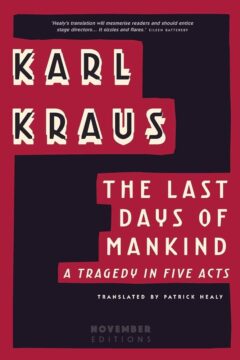 At a time of widespread economic distress, ethnonationalists in the United States and United Kingdom as well as Germany, France, Hungary, Poland and Italy are united by their antipathy to immigrants, and targeting of institutions deemed insufficiently patriotic or indulgent of sexual, ethnic and racial minorities. This bleak scenario can be further elaborated. The main economic ideologies of endless growth and global prosperity have come up against environmental constraints and technological innovation, as well as built-in limits, and look unsustainable.
At a time of widespread economic distress, ethnonationalists in the United States and United Kingdom as well as Germany, France, Hungary, Poland and Italy are united by their antipathy to immigrants, and targeting of institutions deemed insufficiently patriotic or indulgent of sexual, ethnic and racial minorities. This bleak scenario can be further elaborated. The main economic ideologies of endless growth and global prosperity have come up against environmental constraints and technological innovation, as well as built-in limits, and look unsustainable. Like her other works—including Sister Deborah, the English translation of which is forthcoming from Archipelago later this month—Cockroaches is a reckoning with history, a steadfast commemoration of a community and culture that others tried to eradicate. But even in her debut, which many early critics read as a straightforward work of testimony about the Tutsi genocide, there is a deeply self-questioning quality to that work of commemoration. The narrator always wakes from her nightmare just as she is about to perish at the hands of her pursuers, who have already killed the other Tutsi girls fleeing alongside her. She thinks, “I know I’m going to fall, I’m going to be trampled”; and yet each night she reopens her eyes and her surroundings contradict this conviction. Why was she chosen to survive, and who did the choosing?
Like her other works—including Sister Deborah, the English translation of which is forthcoming from Archipelago later this month—Cockroaches is a reckoning with history, a steadfast commemoration of a community and culture that others tried to eradicate. But even in her debut, which many early critics read as a straightforward work of testimony about the Tutsi genocide, there is a deeply self-questioning quality to that work of commemoration. The narrator always wakes from her nightmare just as she is about to perish at the hands of her pursuers, who have already killed the other Tutsi girls fleeing alongside her. She thinks, “I know I’m going to fall, I’m going to be trampled”; and yet each night she reopens her eyes and her surroundings contradict this conviction. Why was she chosen to survive, and who did the choosing?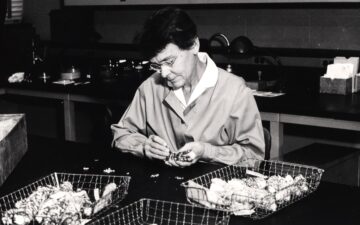 Suppose you want to be a better person. (Lots of us do.) How might you go about it? You might try to become more generous and commit to donating more of your income to charity. Or you might try to become more patient, and practise listening to your partner, instead of snapping at them. These commonsense prescriptions invoke an ancient ethical tradition. Generosity and patience are virtues – excellences of character, whose exercise makes us flourish. To live well, says the virtue ethicist, is to cultivate and exercise just such excellences of character.
Suppose you want to be a better person. (Lots of us do.) How might you go about it? You might try to become more generous and commit to donating more of your income to charity. Or you might try to become more patient, and practise listening to your partner, instead of snapping at them. These commonsense prescriptions invoke an ancient ethical tradition. Generosity and patience are virtues – excellences of character, whose exercise makes us flourish. To live well, says the virtue ethicist, is to cultivate and exercise just such excellences of character.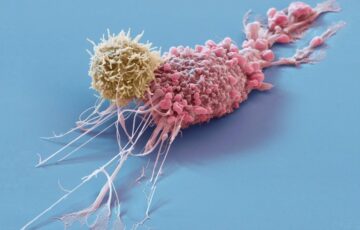 One woman and two men with severe autoimmune conditions have gone into remission after being treated with bioengineered and CRISPR-modified immune cells
One woman and two men with severe autoimmune conditions have gone into remission after being treated with bioengineered and CRISPR-modified immune cells